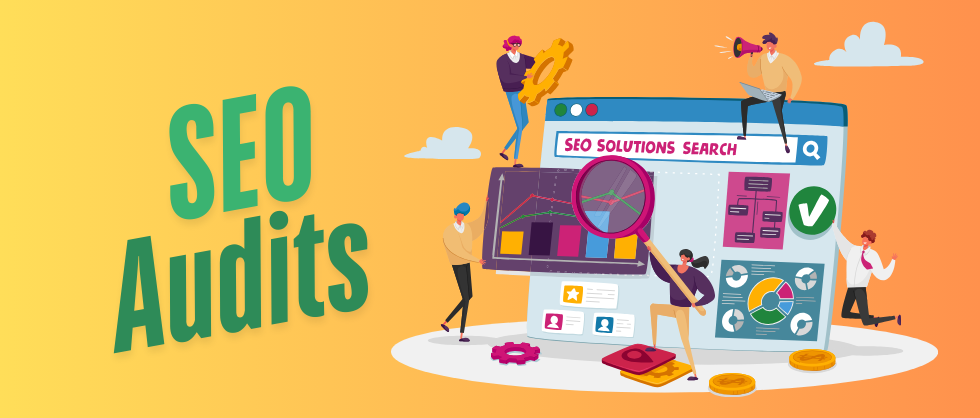How to Capture Attention of New Website Visitors
Introduction
Imagine stepping into a bustling city for the first time. The lights are bright, the is palpable, and the opportunities are endless. But without a guide, the city can be overwhelming. This is the same experience new visitors have when they land on your website. The digital landscape is vast, and capturing the attention of these first-time visitors is no easy task. But it’s not. In this post,’ll explore proven strategies to grab the attention of new website visitors and keep them engaged.
We’ll delve into understanding your buyer personas, getting the basics right, crafting a compelling value proposition, making your product details easy to understand, and more. So, buckle up and let’s begin this journey to create a captivating digital experience for your new website visitors.
The primary goal is to turn these first-time visitors into paying customers. And that journey begins with a deep understanding of who these visitors are, what they want, and how your website can meet their needs. Let’s start with the first step.
1. Improving Sales with Buyer Personas
The cornerstone of every successful marketing strategy is understanding your audience. When it comes to capturing the attention of new website visitors, it starts with developing detailed buyer personas. These are fictional representations of your ideal customers, based on market research and data about your existing customers.
Understanding your buyer personas helps you tailor your content, messaging, product offering, and user experience to the specific needs, behaviors, and concerns of your target audience. This personal touch is crucial in capturing and holding the attention of new website visitors.
So, how do you go about creating these buyer personas? The process involves gathering data through market research, surveys, and interviews with your audience. This data should cover demographic information, behavior patterns, goals, and pain points of your customers.
2. Get the Basics Right
Once you’ve developed a strong understanding of your buyer personas, the next step is to get the basics right. This means creating a website that is visually appealing, easy to navigate, and optimized for speed and mobile use. In this digital age, first impressions are everything. And if your website doesn’t meet the basic expectations of your visitors, they won’t stick around for long.
Visually appealing websites are often the ones that are clean, uncluttered, and have a consistent color scheme. The navigation should be intuitive, making it easy for visitors to find what they’re looking for. A site that’s optimized for speed ensures that your visitors won’t get frustrated and leave if your pages take too long to load. And with more people accessing the internet via their mobile devices, having a mobile-optimized website is no longer optional; it’s a necessity.
Getting the basics right also involves optimizing your site for search engines. This increases your visibility and makes it easier for potential customers to find you. By using relevant keywords, creating high-quality content, and building authoritative backlinks, you can improve your search engine ranking and attract more visitors to your site.
3. Crafting a Clear and Compelling Value Proposition
Once you’ve attracted visitors to your site, the challenge is to keep them engaged and interested. One way to do this is by clearly communicating your value proposition. This is a statement that explains how your product or service solves your customers’ problems, what benefits it offers, and why customers should choose you over your competitors.
Clear and compelling value propositions grab the attention of visitors, make them curious about your product or service, and encourage them to stay on your site longer. So, don’t be vague or generic with your value proposition. Instead, make it specific, concise, and focused on the benefits that your product or service offers.
Remember, your value proposition should be the first thing that visitors see when they land on your site. So, place it prominently on your homepage and other key landing pages. And don’t forget to test different versions of it to see which one resonates the most with your audience.
4. Improving Product Descriptions for Clarity
Once your visitors understand what you offer and why it’s valuable, they’ll want to learn more about your products or services. This is where clear, concise, and easy-to-understand product details come in. The goal is to make it as easy as possible for your visitors to understand what your products do and how they can benefit from them.
Use simple language, avoid technical jargon, and break down complex concepts into easy-to-understand terms. Use bullet points or numbered lists to highlight key features and benefits. And include visuals like images, diagrams, or videos to help explain your products or services further.
Remember, the easier it is for visitors to understand your products, the more likely they are to consider purchasing them. So, invest time and effort in creating product descriptions that are simple, engaging, and informative.
5. Making Product Discovery User-Friendly
Product exploration is a crucial part of the online shopping experience. It’s the digital equivalent of browsing through a physical store. Therefore, your website should make product exploration inviting and simple. This involves creating an intuitive and easy-to-navigate product catalog, offering various filter and sort options, and providing detailed product information.
Consider using high-quality images, 360-degree product views, and videos to showcase your products. Include customer reviews and ratings to give your visitors a sense of what others think about your products. And provide a simple and straightforward way for visitors to add products to their cart and proceed to checkout.
By making product exploration easy and enjoyable, you can keep your visitors engaged, encourage them to spend more time on your site, and increase your chances of converting them into customers.
6. Understanding Customer Needs: A How-to
One of the best ways to capture and hold the attention of your visitors is by addressing their pain points. These are the problems, frustrations, or challenges that your customers are facing. By showing your visitors that you understand their pain points and have a solution to them, you can build trust and establish a connection with them.
However, it’s important to do this without putting sales pressure on your visitors. Instead of pushing your products or services, focus on providing value and solving problems. Offer helpful advice, share valuable insights, and provide solutions that your visitors can implement even if they don’t buy from you.
This approach positions you as an expert and a trusted advisor, rather than just a seller. And it creates a positive impression that can keep your visitors coming back to your site.
7. The Art of Establishing Credibility Fast
Establishing credibility is essential in capturing the attention of new website visitors. In the digital world, where scams are not uncommon, visitors need to know that they can trust you before they can engage with your site.
There are several ways to establish credibility. You can showcase your expertise through high-quality content. You can display testimonials and reviews from satisfied customers. You can highlight any awards, certifications, or endorsements that you’ve received. And you can provide clear and transparent information about your company and your team.
Remember, credibility is not something that you can establish overnight. It takes time and consistent effort. But by clearly showcasing your credibility from the get-go, you can build trust with your visitors and keep them engaged with your site.
8. Mastering the Art of Creating Positive Emotions
Emotions play a crucial role in our decision-making process. They can influence our choices, motivate our actions, and shape our experiences. Therefore, generating positive emotions can be a powerful way to capture and hold the attention of your visitors.
You can generate positive emotions through the use of engaging visuals, inspiring stories, and interactive elements. You can create a sense of excitement and anticipation through limited-time offers and promotions. And you can evoke feelings of trust and comfort by providing excellent customer service and support.
By creating a positive emotional experience, you can make your visitors feel good about interacting with your site. And this can increase their engagement, boost their satisfaction, and improve your chances of converting them into customers.
9. How to Identify and Convert Early-Stage Visitors
Finally, it’s important to understand that not all of your visitors will be ready to make a purchase right away. Some might be in the early stages of their buying journey, just exploring their options and gathering information. Others might be ready to buy but need a little nudge to take the final step.
For those in the early stages, provide helpful content that educates and informs them. Offer resources that they can use to make an informed decision. And keep the lines of communication open, so they can reach out to you if they have questions or need assistance.
For those who are ready to buy, make the buying process as easy and seamless as possible. Provide clear and straightforward pricing information. Offer multiple payment options. And provide a quick and easy checkout process.
By understanding where your visitors are in their buying journey and tailoring your approach accordingly, you can capture their attention, meet their needs, and guide them towards making a purchase.
In conclusion, capturing the attention of new website visitors involves understanding your audience, creating an engaging and user-friendly website, communicating your value proposition clearly, making product details and exploration easy, addressing pain points without sales pressure, establishing credibility, generating positive emotions, and understanding the readiness of your visitors. By implementing these strategies, you can create a captivating digital experience that attracts and retains visitors, increases engagement, and drives conversions.




